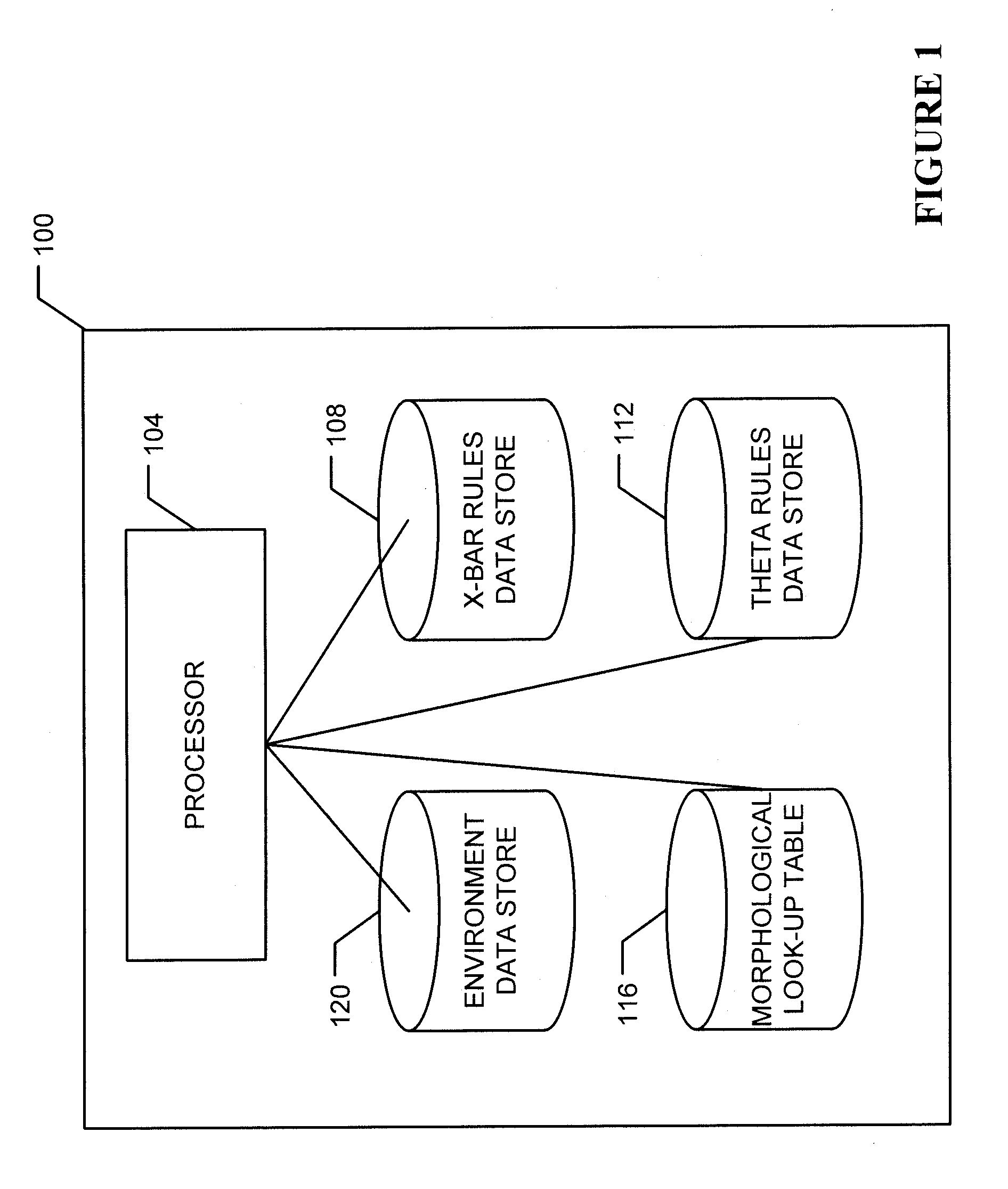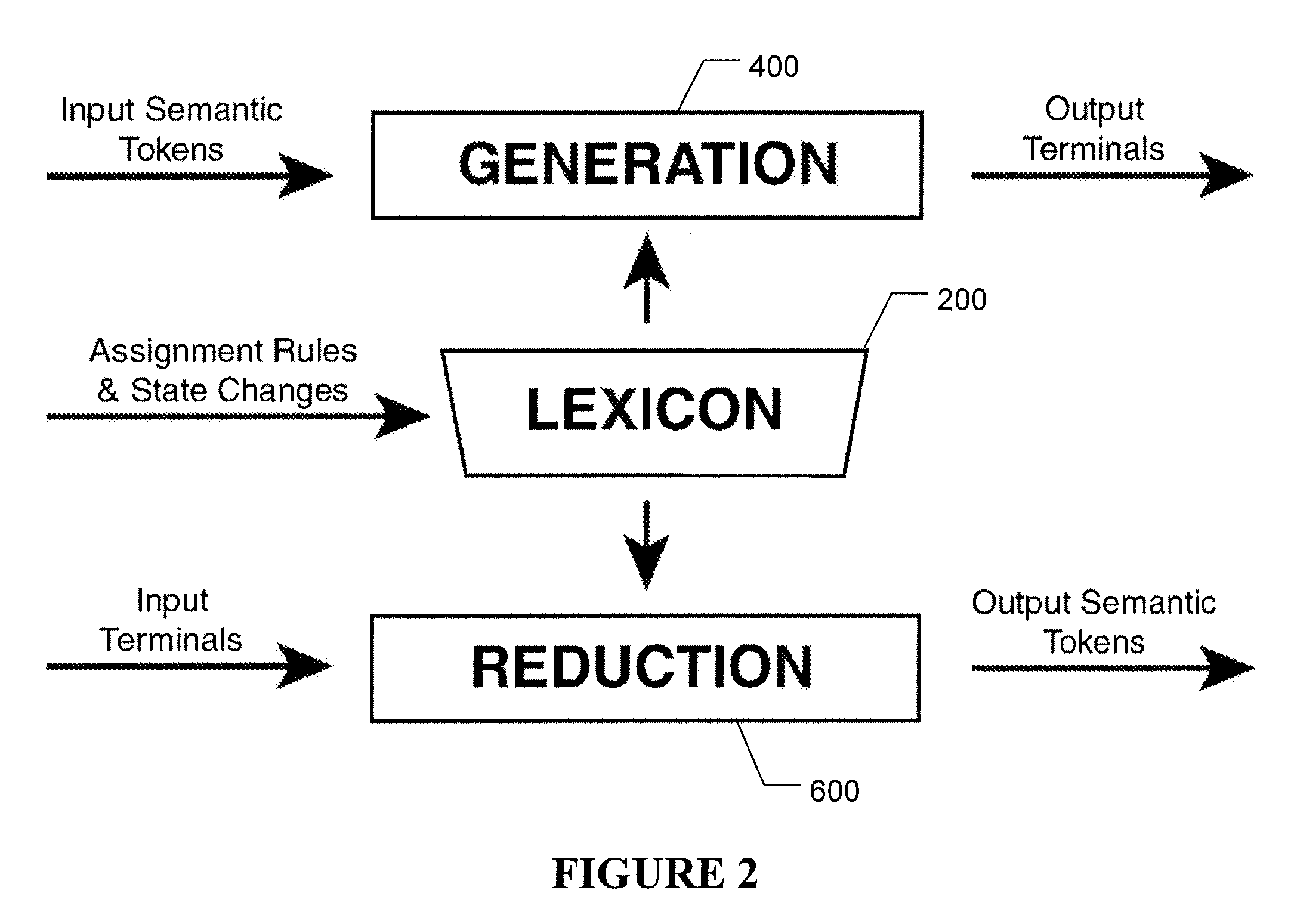Computational linguistic systems and methods
a natural language and computational technology, applied in the field of systems and methods for computational analysis of natural languages, can solve the problems of complex task of converting analysis grammars into generation grammars, difficult task of using context sensitive grammars on computational devices, complex task of producing generation grammars, etc., to improve database and web search query tools, the effect of improving the accuracy of natural language processing
- Summary
- Abstract
- Description
- Claims
- Application Information
AI Technical Summary
Benefits of technology
Problems solved by technology
Method used
Image
Examples
Embodiment Construction
[0059]An explanation of some of the terms and lexical notations used herein is provided below to aid in understanding of the description that follows. It will be appreciated that the notations, assignment operators, and the like, are merely exemplary and may vary from that described herein.
[0060]In the following description, a new relationship between internal process constituents may be defined using a colon:
[0061]new-constituent-name:[0062]a b c d . . .
It will be appreciated that there is no limit on the number of constituents in a relationship, and that the colon is used for internal processing purposes (i.e., it is not part of the definition of the external input language). Multiple possible definitions may be defined with multiple lines:
[0063]new-constituent-name:[0064]a b c d . . .[0065]aa bb cc dd . . .[0066]aaa bbb ccc ddd . . .
It will be appreciated that new constituents can also be defined within the general description of the process. Exemplary new constituents include:
[0...
PUM
 Login to View More
Login to View More Abstract
Description
Claims
Application Information
 Login to View More
Login to View More - R&D
- Intellectual Property
- Life Sciences
- Materials
- Tech Scout
- Unparalleled Data Quality
- Higher Quality Content
- 60% Fewer Hallucinations
Browse by: Latest US Patents, China's latest patents, Technical Efficacy Thesaurus, Application Domain, Technology Topic, Popular Technical Reports.
© 2025 PatSnap. All rights reserved.Legal|Privacy policy|Modern Slavery Act Transparency Statement|Sitemap|About US| Contact US: help@patsnap.com



